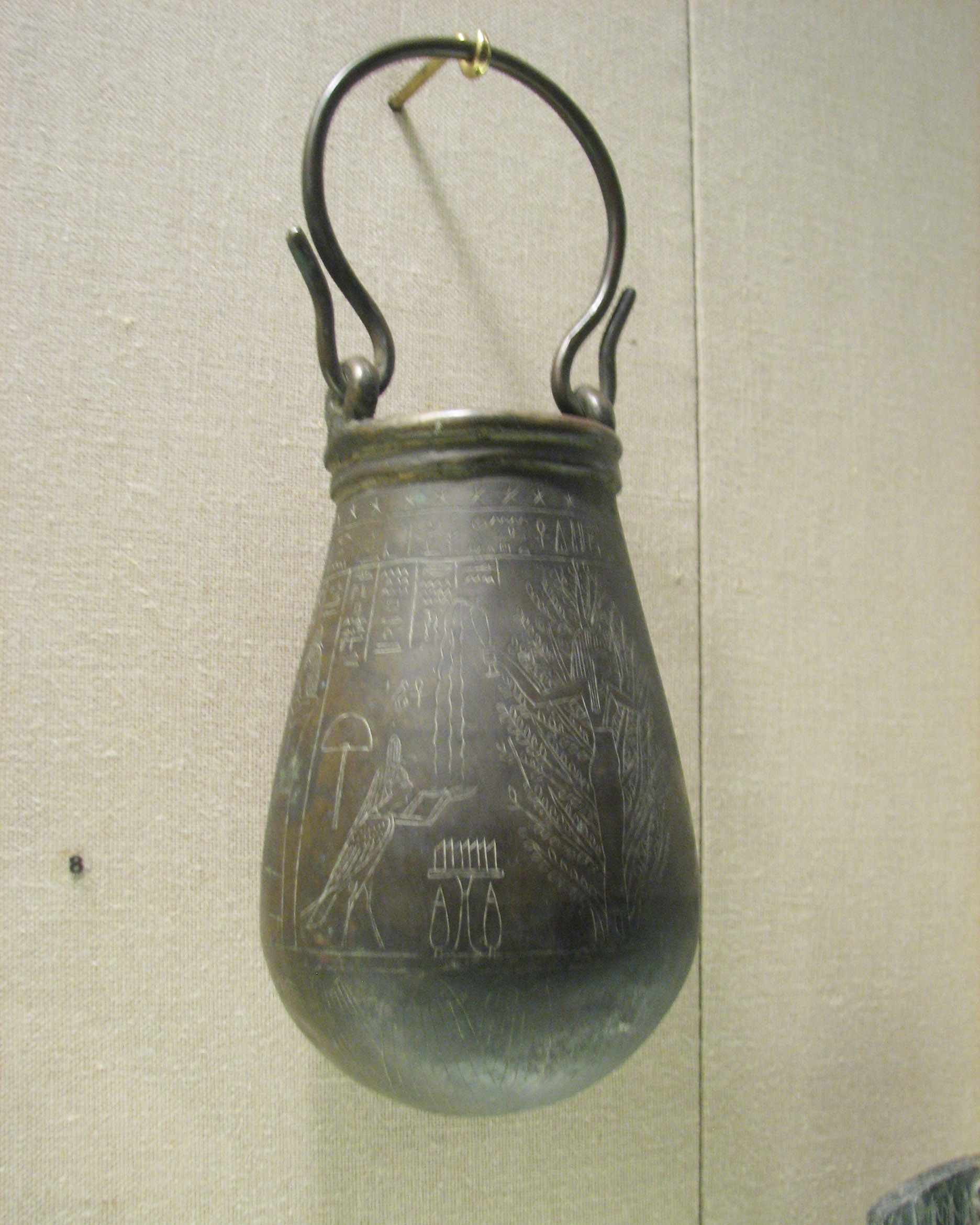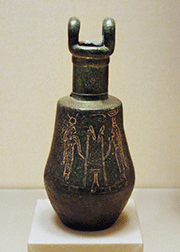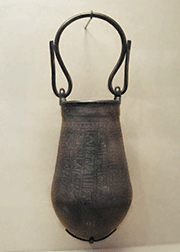
Macedonian and Ptolemaic Period, 332–30 BCE
Bronze or copper alloy, 27 cm (10 5/8 in.) with handle 39.7 cm (15 5/8 in.)
Fletcher Fund, 1965, MMA 65.116
|
There's a scene engraved upon it of the ba-bird (representing the person's immortal soul)
and a goddess within a tree who is annointing him with vital fluids.
Description from museum website: "The situla honored the funerary cult of Penmin and also prayed for health for the living Hetepkhonsu. Large situlae with this genre of scenes involving offerings to funerary gods and references to the funerary cult of a deceased derive, when their provenance is known, from the Theban area. There they are most likely to have been associated with the Festival of the Decades, whose celebrations had by this time largely overshadowed those of the Festival of the Valley. The festival of the Decades marked libations performed in original intent every 10 days by Amun of Opet to his ancestor primeval gods at the mound of Djeme; this became a context in which the deceased more generally could share in libations made by the god to his ancestor gods, and a focus of observances. "Penmin is given no other titles on this situla than 'Great Praised,' a designation that points to a special category of the dead who had a sort of saint-like status. This title and its possible relation to the Festival of the Decades along with other points about this situla, some of them mentioned above, were illuminated in an unfinshed study by the Egyptologist Jan Quaegebeur. |
 Situla @ Lacma |
 Situla @ Lacma |


